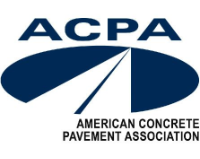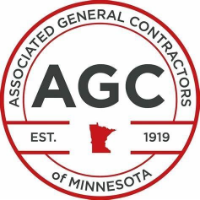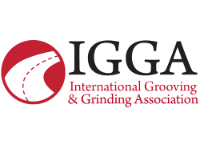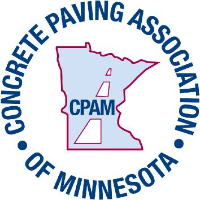Diamond Surface Slurry Best Practices
Management Practices
The International Grooving & Grinding Association (IGGA) is a non-profit Trade Association founded in 1972 by a group of dedicated industry professionals committed to the development of the diamond grinding and grooving process for surfaces con structed with Portland cement concrete and asphalt. In 1995, the IGGA joined in affiliation with the American Concrete Pavement Association (ACPA) to represent its newly formed Concrete Pavement Restoration Division. The IGGA / ACPA CPR Division now serves as the technical resource and industry representative in the marketing of optimized pavement surfaces, concrete pavement restoration and pavement preservation around the world. The mission of the IGGA is to serve as the leading promotional and technical resource for acceptance and proper use of diamond grinding and grooving as well as PCC preservation and restoration. For more information, visit www.igga.net.
Definitions
Diamond Grinding Slurry
Diamond grinding slurry is an inert, nonhazardous byproduct of the diamond grinding process utilized on pavement to restore ride quality, increase skid resistance and reduce noise. The slurry is a combination of water used to cool the grinding blades and the thin layer of concrete that is being removed. Numerous tests have been conducted that verify the material is nonhazardous (Holms & Naver 1997, IGGA May 1990, CSS Environmental Services September 2006, Concrete Pavement Rehabilitation – Guide for Diamond Grinding, FHWA June 2001).
Best Management Practices
The following Best Management Practices (BMP) are the result of the International Grooving and Grinding Association’s intent for slurry byproduct to continue to be handled in a professional,
environmentally responsible fashion.
Slurry Spreading Disposal
- In rural areas that have vegetated slopes, the slurry can be deposited on the slopes as the grinding operation progresses down the road. As a part of the contract documents, the engineer shall identify wetlands and other sensitive areas where slurry discharge operations are not permitted.
- The engineer and contractor shall make a site inspection prior to the start of grinding to identify sensitive areas.
- The spreading of slurry should not take place through these sensitive areas.
- The spreading start and stop points shall be clearly marked on the shoulder of the road.
- The slurry generated while grinding in unpermitted areas shall be picked up and hauled for disposal in non-sensitive areas on the job.
- The slurry should not be allowed to flow across the roadway into adjacent lanes.
- The diamond grinding equipment shall be equipped with a well-maintained vacuum system that is capable of removing all standing slurry, leaving the roadway in a damp condition after the grinder passes.
- The vacuumed material shall be spread evenly on the adjacent slopes by dragging a flexible hose or other approved device along the slope.
- The spreading should not take place on the shoulder.
- Spreading should begin a minimum of 1 foot from the shoulder, with each pass of the grinder moving the spreading operation farther down the slope to ensure no build-up of grinding residue.
- The slurry shall not be spread within 100 feet of any natural stream or lake or within 3 feet of a water-filled ditch. Efforts shall be taken to restrict the spreading operation to above the high-water line of the ditch.
- At no time will the grinding residue be allowed to enter a closed drainage system. The contractor is responsible for providing suitable means to restrict the infiltration of the grinding residue into the closed drain system
Slurry Collection and Pond Decanting
- In urban and other areas with closed drainage systems, the slurry shall be collected in water-tight haul units and transported to settlement ponds constructed by the contractor.
- These ponds may be constructed within or outside the right-of-way. All locations shall be approved by the engineer.
- These ponds shall be constructed to allow for the settlement of the solids and decanting of the water for reuse in the grinding operation.
- At the completion of the grinding operation, the remaining water will be allowed to evaporate or may be used in a commercially useful manner (i.e., dust control).
- After drying, the remaining solids may be used as a fill material, a component in recycled aggregate or any other commercially useful application.
- The pond area shall be reclaimed to its original condition and vegetated to protect against erosion
Success of the Plan
As with any plan, the only way to make these best practices a success is through continuous, open communication. The contractor and engineer shall review the separate aspects of this plan to determine which sections apply to their role in the project. These parties should discuss the applicable sections and jointly determine how to apply the best practices, as well as review the application of practices in the field. The contractor and engineer should sign off on the jointly developed plan to facilitate full compliance with each of the plan elements.
Slurry Collection and Plant Processing
- The slurry shall be collected and hauled as with pond processing.
- There are various plant designs that may be used such as centrifuge and belt press.
- The plant site shall be prepared to control any storm water runoff in accordance with state regulations.
- The site should be restored and vegetated at the completion of operations.
- The processed water and solids are to be handled in the same fashion as the settlement ponds.
- The site may be within or outside the right-of-way. Site locations are to be approved by the engineer
PH Control Plan
- With either the spreading or pickup operation, the contractor will monitor and control the pH of the slurry.
- The slurry will be managed to maintain a pH below 12.5 and greater than 2.
- At the start-up of operations, the contractor will test the pH at least once per hour to ensure it is within the acceptable limits.
- The test equipment will be calibrated daily and approved by the engineer.
- Once the pH control plan is operational and producing consistent results, the testing frequency may be reduced to 4 tests per day.
- The contractor shall log all test results and deliver a signed copy to the engineer weekly.
- At no time shall slurry containing pH outside the above limits be allowed to be deposited on the ground.
- The contractor shall determine the procedure to be used to maintain the slurry within the acceptable range.
- The procedure shall be approved by the engineer.






